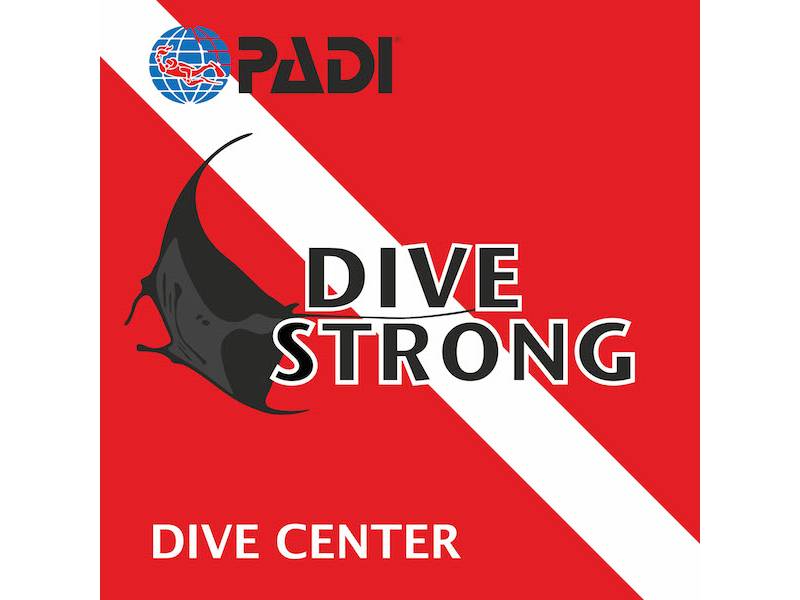Few things will plunge your heart into your gut faster than surfacing from a dive to find the boat is not there. Floating alone, you feel like a flyspeck on a vast ocean, and relative to the surface area you’re bobbing around in, that’s pretty much what you are. If you want to get noticed, you’re going to need some help.
Surface signalling devices (SSDs) can be categorized into four types: visual, audible, electronic, and night-use. Depending on surface conditions, each type brings to a rescue scenario its own advantages.
Visual
The most commonly used visual SSD is the signal tube, also known as the safety sausage. An average-size signal tube is effective in attracting attention up to about a half mile, while larger/longer tubes can commonly be seen from three-quarters of a mile and sometimes up to a full mile, depending on the size of the tube, the time of day, and the surface conditions.
Buy the longest, widest, brightest tube you can carry. Colour can also make a difference: fluorescent-yellow tubes tend to be more visible in overcast conditions, while emergency-orange tubes stand out better in bright sunlight. Different colours are easier to spot depending on the conditions; if you have both a yellow and an orange tube, deploy both for maximum visibility.
Deploy your signal tube immediately upon surfacing if you’re drifting away from the boat. You may be out of visible range in a matter of minutes.
Wave the tube over your head until you see some sign that the boat has noticed you. Multiple tubes are easier to spot than individual ones. If your buddy has a tube, both should be deployed.
The signal mirror is an under-appreciated method for attracting attention. Light and compact, most signal mirrors are made from durable polycarbonate materials that won’t break. The best mirrors offer a center “sight” that lets you see the reflection as a red spot when you look through it. Put the red dot on the vessel you’re trying to signal and they should see the flash. Mirror reflections can easily be seen from as much as a half-mile away.
Audible
In low-light conditions or when visibility suffers due to fog, mist, or choppy seas, the blast of an emergency whistle can get searching ears pointed in your direction in a hurry. Standard signal whistles are effective up to about a quarter-mile. The best whistles can be heard over twice that distance. But to radically increase the chance of being heard you need to equip yourself with a pneumatic horn. These compact devices install between the BC’s power inflator and low-pressure hose. Using air from your tank, the push of a button creates a piercing honk that can be heard up to a mile away.
Electronic
For local diving, the most versatile devices combine a fully waterproof GPS with a hand-held VHF radio, allowing you to contact the dive boat — or any boat within range — send a distress call directly to the Coast Guard, or transmit a digital distress message with your GPS coordinates. There are also GPS devices that don’t offer VHF but do have the ability to text message, email, and send emergency SOS messages. For diving foreign waters, the best electronic rescue aids are the more traditional systems like GPS personal locator beacons. However, these units are not built for depth so they have to be carried in a waterproof dry box while diving and used only on the surface.
Night Use:
If the worst-case scenario comes to pass and you find yourself out on the ocean after dark, nothing beams “Here I am!” more intensely than a strobe light — preferably one that’s mounted atop a signal tube to get maximum elevation. Chemical light sticks or battery-powered tank lights enlarge your target by providing steady light that contrasts the strobe. And having a pocket light handy that you can wave wildly when the time comes helps approaching boats zero in on your position.
Mix It Up
To maximize the chances of rescue it never hurts to dive with at least two signalling devices — for example, a tube and an air horn or whistle. Mirrors are small and stow easily, so you may as well carry one of those too, and, of course, a pocket light is good to have for exploring the reef while you’re diving, so having a dive light could also come in handy if you’re separated from the boat at the surface following a night dive. In other words, it’s better to have it and not need it, than to need it and not have it.
Read a review of the Nautilus Lifeline
Read a review of Ideations Dive Alert
John Brumm is Sport Diver Asia Pacific’s Gear Editor.
Surface signalling devices (SSDs) can be categorized into four types: visual, audible, electronic, and night-use. Depending on surface conditions, each type brings to a rescue scenario its own advantages.
Visual
The most commonly used visual SSD is the signal tube, also known as the safety sausage. An average-size signal tube is effective in attracting attention up to about a half mile, while larger/longer tubes can commonly be seen from three-quarters of a mile and sometimes up to a full mile, depending on the size of the tube, the time of day, and the surface conditions.
Buy the longest, widest, brightest tube you can carry. Colour can also make a difference: fluorescent-yellow tubes tend to be more visible in overcast conditions, while emergency-orange tubes stand out better in bright sunlight. Different colours are easier to spot depending on the conditions; if you have both a yellow and an orange tube, deploy both for maximum visibility.
Deploy your signal tube immediately upon surfacing if you’re drifting away from the boat. You may be out of visible range in a matter of minutes.
Wave the tube over your head until you see some sign that the boat has noticed you. Multiple tubes are easier to spot than individual ones. If your buddy has a tube, both should be deployed.
The signal mirror is an under-appreciated method for attracting attention. Light and compact, most signal mirrors are made from durable polycarbonate materials that won’t break. The best mirrors offer a center “sight” that lets you see the reflection as a red spot when you look through it. Put the red dot on the vessel you’re trying to signal and they should see the flash. Mirror reflections can easily be seen from as much as a half-mile away.
Audible
In low-light conditions or when visibility suffers due to fog, mist, or choppy seas, the blast of an emergency whistle can get searching ears pointed in your direction in a hurry. Standard signal whistles are effective up to about a quarter-mile. The best whistles can be heard over twice that distance. But to radically increase the chance of being heard you need to equip yourself with a pneumatic horn. These compact devices install between the BC’s power inflator and low-pressure hose. Using air from your tank, the push of a button creates a piercing honk that can be heard up to a mile away.
Electronic
For local diving, the most versatile devices combine a fully waterproof GPS with a hand-held VHF radio, allowing you to contact the dive boat — or any boat within range — send a distress call directly to the Coast Guard, or transmit a digital distress message with your GPS coordinates. There are also GPS devices that don’t offer VHF but do have the ability to text message, email, and send emergency SOS messages. For diving foreign waters, the best electronic rescue aids are the more traditional systems like GPS personal locator beacons. However, these units are not built for depth so they have to be carried in a waterproof dry box while diving and used only on the surface.
Night Use:
If the worst-case scenario comes to pass and you find yourself out on the ocean after dark, nothing beams “Here I am!” more intensely than a strobe light — preferably one that’s mounted atop a signal tube to get maximum elevation. Chemical light sticks or battery-powered tank lights enlarge your target by providing steady light that contrasts the strobe. And having a pocket light handy that you can wave wildly when the time comes helps approaching boats zero in on your position.
Mix It Up
To maximize the chances of rescue it never hurts to dive with at least two signalling devices — for example, a tube and an air horn or whistle. Mirrors are small and stow easily, so you may as well carry one of those too, and, of course, a pocket light is good to have for exploring the reef while you’re diving, so having a dive light could also come in handy if you’re separated from the boat at the surface following a night dive. In other words, it’s better to have it and not need it, than to need it and not have it.
Read a review of the Nautilus Lifeline
Read a review of Ideations Dive Alert
John Brumm is Sport Diver Asia Pacific’s Gear Editor.

 RSS Feed
RSS Feed





